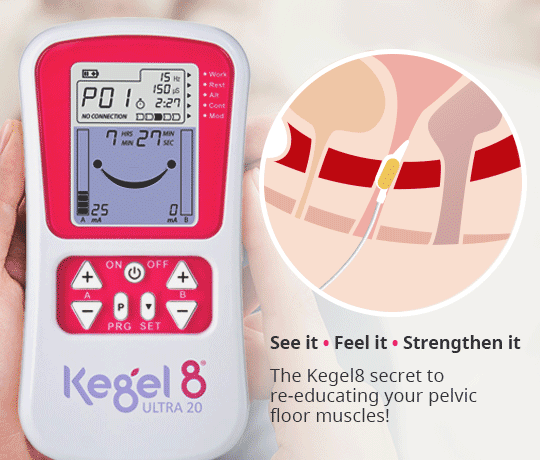
In this article, Amanda Savage shares the best exercises you can do to help resolve your incontinence.

Strengthen Your Natural Corset
The pelvic floor muscles are the key group that provide support for our internal organs (the bladder, bowel and uterus) and directly help prevent incontinence by closing the urethra and the anus. Pelvic floor exercises (aka Kegel exercises) should be the first priority for anyone with bladder leakage or a pelvic organ prolapse.
But our bodies are made up of lots of other joints and muscle groups too. Most specialist pelvic health physiotherapists will also suggest that you work on your other ‘core’ muscles too. The core is the combined group of the pelvic floor with your small back muscles, your lower abdominal muscles and your breathing muscle (the diaphragm). It is often referred to as your natural corset.
The core muscles surround the organs from all sides, so if they work in balance they keep the organs in the right position. The core muscles should learn to work together in all the activities that you do. The pelvic floor muscles also work best if the spine, pelvis and hips bones and joints are in good alignment. All the other muscles attaching in the same area need to strong and flexible, and your movements should feel smooth and elegant.
Core Exercises Have Lots of Benefits
In an average day you will probably walk, talk, climb stairs, lift and carry things. If you have a sport or hobby there will be other skilled tasks to do too. These all require a strong and stable core.
- If we have strong lower abdominals and gluteals (the bottom muscles) our body can absorb shock better with each step we take.
- If we learn to walk, run and move smoothly, with even weight on each foot, and good support from our core, our bladder and organs are not jolted around so much as we move.
- If we learn to use our bottom muscles to propel us forward when we walk, to push us up out of a chair or up the stairs we take the load off our arms and backs.
- If we improve our posture, we give space to the pelvic organs and they don’t feel so squashed up or irritated.
- If we learn to use our lower abdominals as a ‘natural corset’ they help to holds us in like a good pair of support pants as we move around.
Lets Get Started
Even if right now your feel like you couldn’t possibly locate your lower abdominals, let alone hold them with your pelvic floor and breathe - you will be amazed to discover that with a little bit of learning and a few practice sessions you can re-train your brain to use your natural corset muscles in a new habit.
In the video below, I get Stephanie started on some foundation core exercises. I am a Pilates Instructor as well as a Specialist physiotherapist so I teach them ‘pilates-style’ but you may have come across similar exercises in your own exercise class, yoga, Tai chi or Barre.
Try these exercises with Stephanie and see if you can feel the benefit of putting some focus into your core. If you do, I highly recommend joining a class. Just once a week can make an enormous difference. It doesn’t have to be Pilates. Whatever is your thing, or just most convenient to get to. Choose something low-impact, aimed at strength and conditioning, led by an experienced and interested instructor. Get your partner or a friend to commit to coming with you (or babysitting!). Pay your money upfront because it will make you go. Having someone professional hold you accountable, check your technique and make you do it the exercises properly will pay huge dividends to your pelvic floor and your whole body.
Where You Can Find Amanda
If you are concerned about your pelvis, abdominal muscles, bladder or bowels do visit my blog, www.supportedmums.com. You can also watch me and Stephanie talk about the structures of the pelvic floor in our YouTube Series: The Pelvic Floor and Pelvic Floor Exercise Techniques.






